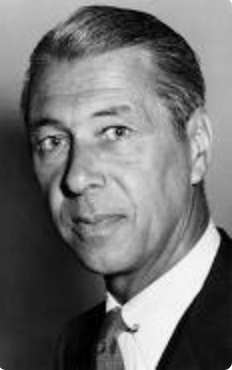
-
Artist: Herbert Bayer (Austrian and American, 1900-1985)
Herbert Bayer (1900–1985) was an Austrian-American artist, designer, architect, and educator, widely recognized as a major figure in the development of modernist design. He was particularly influential in the fields of graphic design and typography, but his career spanned many disciplines, including painting, sculpture, and environmental design. Bayer's legacy is tied to his association with the Bauhaus, one of the most influential modern art and design schools of the 20th century.
Early Life and Bauhaus Involvement:
Born: April 5, 1900, in Haag, Austria.
Bayer studied architecture in Germany before joining the Bauhaus school in 1921. At the Bauhaus, he studied under prominent figures like Wassily Kandinsky and László Moholy-Nagy and became one of the school’s most prominent students and later, an instructor.
He played a significant role in shaping the school's design philosophy, particularly in typography and advertising, and became the director of printing and advertising at the Bauhaus.
Design and Typography:
Sans-Serif Typography: Bayer is known for creating a universal, sans-serif typeface. One of his most famous creations was a proposal for a geometrically based alphabet that excluded capital letters, aiming for simplicity and efficiency.
His graphic design work is often celebrated for its clean, functional aesthetic, heavily influenced by Constructivism and the Bauhaus ethos of merging art with function. He revolutionized advertising and design by using simple, bold layouts with clear, modern typefaces.
Art and Architectural Work:
Environmental and Exhibition Design: Bayer’s career extended beyond two-dimensional design into architecture, exhibition design, and environmental art. Notably, he designed exhibitions for the German Werkbund and later created many projects for the Museum of Modern Art (MoMA) in New York.
The Aspen Connection: In the 1940s, Bayer moved to the United States, settling in Aspen, Colorado, where he played a major role in the city’s cultural and environmental development. His design for the Aspen Institute campus and contributions to the Aspen Design Conference cemented his influence on American modernism.
Later Career and Legacy:
In his later years, Bayer’s work spanned a wide range of mediums, from large-scale environmental art projects to advertising campaigns for companies like Weyerhaeuser and Container Corporation of America. His visual contributions significantly shaped corporate design in the mid-20th century.
Art: Bayer also had a successful career as a painter, embracing surrealism and abstraction. His paintings often explored geometric forms, optical illusions, and conceptual ideas of space and color.
Legacy: Herbert Bayer’s work remains influential today in design education, typography, and modernist architecture. His multidisciplinary approach and his ability to bridge the gap between art, design, and practical application make him a towering figure in 20th-century design.
Bayer passed away in 1985, leaving behind a lasting legacy in modernist design and the integration of art into everyday life.
His works are held in major collections around the world, including the Guggenheim Museum, the Museum of Modern Art (MoMA), and the Bauhaus Archive in Berlin.
Powered by Artwork Archive
